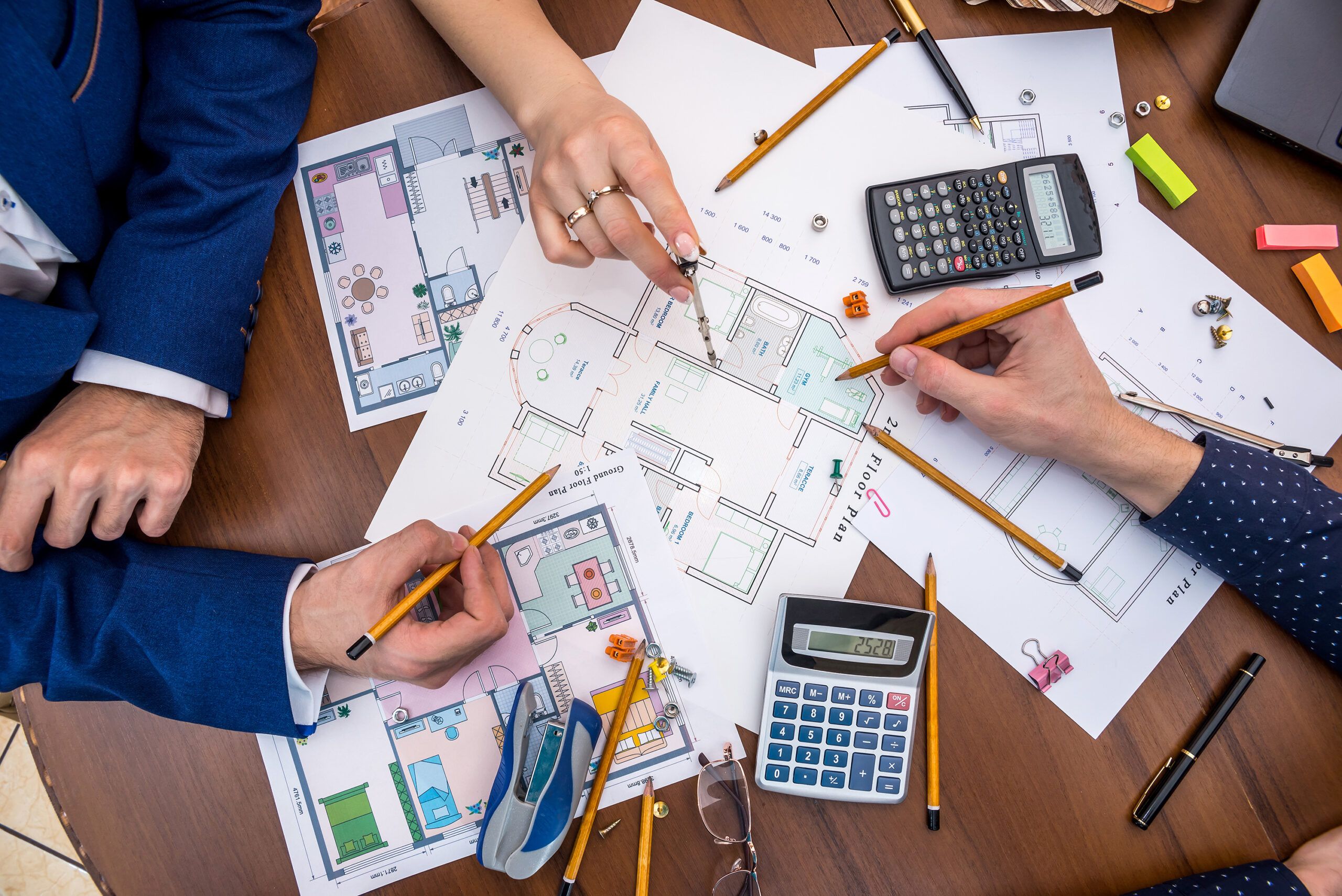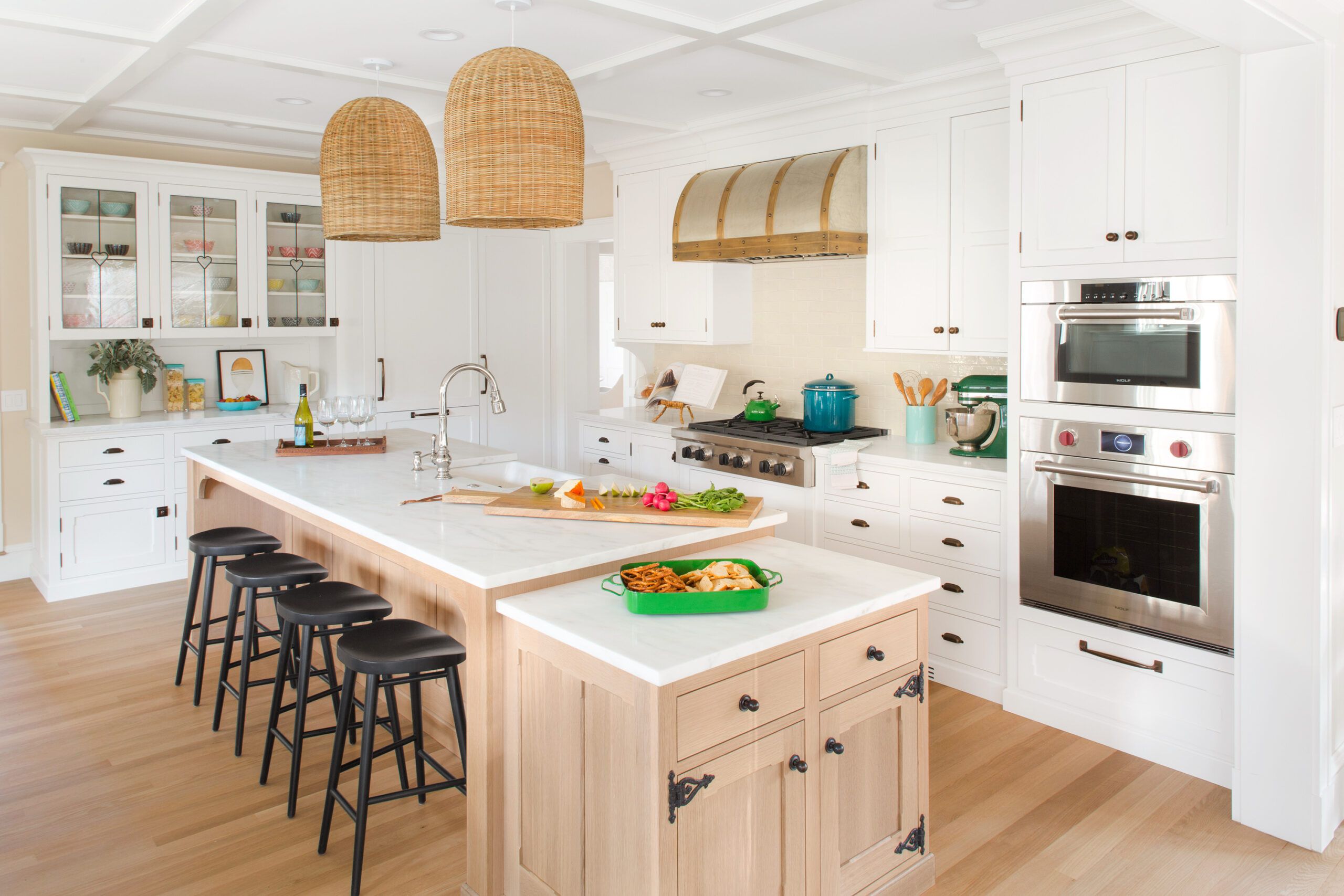Sponsored by Discover Personal Loans
Designing a kitchen is a complex and exciting process that can transform the heart of your home. Whether you’re planning a full renovation or a minor update, hiring a professional kitchen designer can make a difference in the outcome of your project. A skilled designer has expertise in layout, functionality, and interior decorating and can help you create a space that not only looks beautiful but also works for your lifestyle. Let’s dive into the process, costs, and benefits of working with a kitchen designer.
Kitchen Design Costs
Kitchen design fees can vary widely based on the scope of the project and the designer’s experience level. Here are some numbers to help you budget.
Average Costs for Kitchen Design Services
According to Angi, kitchen design services cost anywhere from $5,000–$31,650. Several factors can impact cost, including the following:
- Additional services, like 3D renderings or material sourcing
- Designer’s experience and reputation
- Geographic location
- Level of involvement required (full-service vs. consultation)
- Project scope and complexity
Discuss fees upfront with potential designers to ensure their services align with your budget. Investing in professional design could help you avoid costly mistakes and optimize your space efficiently.

Benefits of Hiring a Certified Kitchen Designer
Professional kitchen design goes beyond selecting attractive finishes and appliances. From a design and build perspective, kitchens are typically more complicated than other rooms in the home, involving plumbing, electrical, and sometimes gas lines, plus appliances, fixtures, and lighting, and work and storage areas.
Certified kitchen designers have extensive training in kitchen-specific design principles, such as ergonomics, safety standards, and building codes. They’re well-versed in the latest trends and technologies and can help you create a stylish and functional kitchen. Plus, their industry connections can give you access to a wider range of products and materials, sometimes at lower prices. They can often foresee potential issues and offer solutions before construction begins, potentially saving you time and money.
Types of Kitchen Design Professionals
When it comes to kitchen design, you might encounter several types of professionals. Each brings a unique set of skills and perspectives to your project. When choosing a professional, consider your project’s scope, budget, and personal design needs. A certified kitchen designer might be ideal for a complex remodel, while an interior designer could be suitable for a more straightforward update.
Certified Kitchen Designers
Certified Kitchen Designers (CKDs) are specialists who have met rigorous standards set by the National Kitchen and Bath Association (NKBA). These professionals have demonstrated extensive knowledge of kitchen design, including cabinetry, appliances, materials, and construction.
Architects and Interior Designers
Architects and interior designers may also offer kitchen design services, especially as part of larger home renovation projects. While they may not have the specialized kitchen knowledge of a CKD, they can consider how the kitchen fits into your overall home design and bring a broader perspective to your project.
Design-Build Firms
Design-build firms offer design and construction services under one roof. This can streamline the kitchen design process and potentially reduce costs, as the design and construction teams work closely together from the start. Ensure that the firm has experienced kitchen designers on staff.
How To Find the Right Kitchen Designer

Finding the perfect kitchen designer for your project requires research and careful consideration. Here are some ways to discover talented professionals who can bring your vision to life.
Asking for Personal Recommendations
Personal recommendations are a great way to find a reliable kitchen designer. Ask friends, family, or colleagues who have recently completed kitchen projects about their experiences. Their firsthand accounts can provide valuable insights into a designer’s work ethic, communication style, and ability to meet expectations.
Researching Online
The internet is a powerful tool for finding kitchen designers. Many professionals showcase their portfolios online, giving you a sense of their style and expertise. Websites like Houzz, NKBA’s membership directory, and the American Society of Interior Designers (ASID) member search can help you find certified designers in your area. When browsing online, pay attention to reviews and ratings from previous clients.
Visiting Local Showrooms
Local kitchen showrooms and design centers can be excellent resources for finding talented designers. These spaces often employ or collaborate with experienced professionals who can guide you through the design process. You can see materials and finishes in person, which can help you make design decisions.
Key Questions To Ask Potential Kitchen Designers
Ask the right questions while interviewing a kitchen designer to make sure they’re a good fit for your project. These inquiries will help you understand their experience and how they align with your needs and expectations.
Experience and Certifications
Start by asking about the designer’s background and qualifications. Here are some good questions to ask:
- What are your certifications and affiliations?
- How long have you been designing kitchens?
- Have you designed any kitchens similar to what I’m envisioning?
- Can you provide references from recent clients?
We believe that National Kitchen and Bath Association certifications are the gold standard for kitchen designers. Experience with projects similar to yours can also be a strong indicator of a designer’s ability to meet your needs.
Design Process and Communication
Understanding how the designer works and communicates is essential for a smooth project. Once you know their experience and certifications, ask them the following questions:
- How do you approach the design process?
- How many design options will you produce?
- How will we communicate about the project, and how often?
- Will I be looking at plans on paper or using computer-assisted design (CAD) programs?
Pricing Structure and Services Offered
Clarify the financial aspects and scope of services by asking the following questions:
- What is your fee structure, and how is it calculated?
- What services are included in your fee?
- Do you work with specific suppliers or contractors?
- Will you oversee the project through completion?
Preparing for Your Initial Kitchen Design Consultation
The initial consultation with a kitchen designer is a crucial step in your remodeling journey. This meeting helps set the stage for a successful project.
Gathering Inspiration and Ideas
Before meeting with a designer, collect images of kitchens and features you love. Use magazines, websites like Pinterest or Houzz, and even photos of friends’ kitchens to represent your style preferences visually. This will help your designer understand your design and functional goals more quickly and accurately.
Setting a Realistic Budget
Determine how much you’re willing to invest in your kitchen remodel. According to Money, your kitchen budget should typically be about 10%–15% of your home’s total value. Share this information with your designer. This will guide their recommendations for materials, appliances, and overall design scope.
Creating a Wish List of Features

Make a list of must-have features and nice-to-have elements for your new kitchen. Consider storage needs, appliance preferences, lighting requirements, and any specific functional elements you want. This list will help your designer prioritize your needs within your budget constraints.
Collaborating Effectively With Your Kitchen Designer

A successful kitchen renovation relies on effective collaboration between you and your chosen designer. By maintaining open communication throughout the process, you can achieve a final result that aligns with your vision.
Communicating Your Vision Clearly
Be as specific as possible when describing your desired kitchen. Share your kitchen inspiration images and wish list and any concerns you may have about the current space. The more information you provide, the better your designer can understand and interpret your vision. Don’t hesitate to ask questions or seek clarification on any aspect of the design process.
Being Open to Professional Suggestions
While it’s important to communicate your preferences, remember that your designer brings valuable expertise to the table. Be open to their suggestions, even if they challenge your initial ideas. They may propose solutions you hadn’t considered that could enhance functionality or design. A good designer will explain the reasoning behind their recommendations, allowing you to make informed decisions.
Staying Involved in the Design Process
Remain engaged throughout the design process by attending meetings, reviewing plans, and providing timely feedback. Your designer will likely present several design options for your consideration. Take the time to carefully evaluate each one, imagining how you would use the space daily. Don’t rush this process—it’s easier and less costly to make changes on paper than during construction.
Common Kitchen Design Mistakes To Avoid
Even with professional help, it’s easy to make mistakes during a kitchen remodel. Being aware of common pitfalls can help you avoid expensive errors.
One frequent mistake is underestimating the importance of lighting. A well-designed kitchen needs a combination of task, ambient, and accent lighting to function effectively and look its best. Another common error is choosing appliances last. Appliances should be selected early in the process, as their sizes and specifications can significantly impact the overall layout and cabinetry design.
Another pitfall is overlooking storage needs. A beautiful kitchen that lacks adequate storage will quickly become cluttered and frustrating to use. Similarly, neglecting the work triangle—the relationship between the sink, stove, and refrigerator—can result in an inefficient workspace.
Understanding Kitchen Design Timeline
A kitchen remodel is a complex process that requires careful planning and coordination. Understanding the typical timeline can help you set realistic expectations and prepare for each project phase.
Planning Phase
The planning phase typically takes one to three months and includes initial consultations, design development, and finalizing plans. During this time, you’ll work closely with your designer to refine the layout, select materials, and decide on appliances and fixtures. Read our recommendations for the best kitchen appliances.
Design Development
Once the initial plan is approved, the design development phase begins. This usually takes two to four weeks and involves creating detailed drawings, obtaining necessary permits, and finalizing all product selections.
Construction and Installation
The actual construction and installation phase can take anywhere from six to 12 weeks, depending on the scope of the project. This includes demolition, structural changes, installation of cabinetry and appliances, and finishing touches like painting and hardware installation.
If any unexpected issues arise, your timeline could be extended. A good designer will build flexibility into the schedule to account for these possibilities.
Financing Your Kitchen Design Project
Financing a kitchen remodel can be a significant undertaking. Understanding your options and planning carefully can help make your dream kitchen a reality without straining your finances.
Personal Loans for Kitchen Remodels
Personal loans can be an attractive option for financing your kitchen design project. They typically offer fixed interest rates and predictable monthly payments.
Home Equity Options
If you have significant equity in your home, a home equity loan or line of credit (HELOC) might be a good choice. These options often offer lower interest rates than personal loans, but they use your home as collateral.
Our Conclusion
Hiring a kitchen designer can transform your kitchen‘s look and functionality by bringing your vision to life. The key to a successful collaboration is clear communication, thorough preparation, and active involvement throughout the process. By understanding the design timeline, avoiding common mistakes, and considering your financing options, you can navigate your kitchen remodel with confidence.

